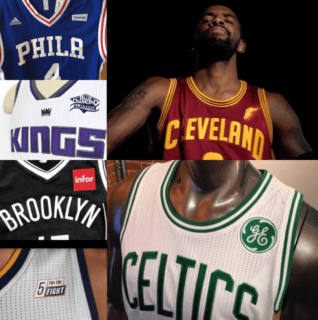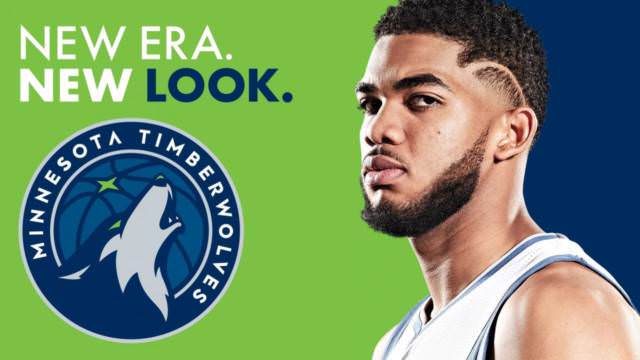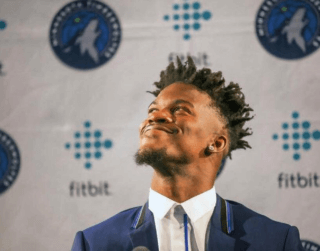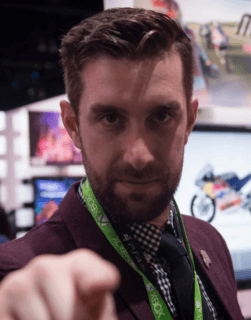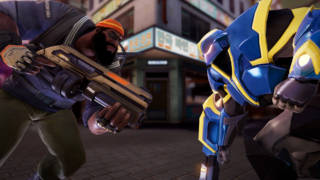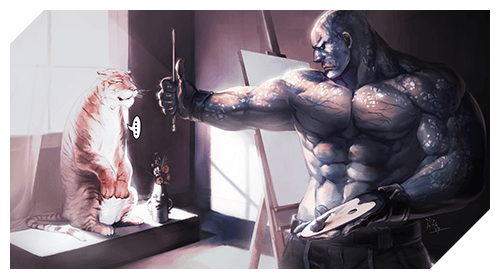Stat Of The Week: Nearly 75 percent of chief marketing officers believe their jobs aren’t designed to let them have the greatest impact on their companies, according to a new Indiana University study. The survey says CMOs are frequently suffering from having poorly designed jobs, accounting for why they have the highest rate of turnover among all roles in the C-suite. The study found that more than 40 percent of CMOs have been in their roles two years or less, and 57 percent three years or less.
JL Pomeroy, a marketing executive with 25 years of international experience in luxury, media, and entertainment sectors, has been named chief marketing officer for IMAX and will be assigned to lead the entertainment company’s global marketing efforts.
“IMAX is one of the world’s most recognizable brands. As we continue to innovate and invest in new content and VR initiatives, our brand must evolve to reflect these new business priorities,” said IMAX CEO Richard L. Gelfond. “JL has a strong creative brand vision and a passion for content creation. Her success as an entrepreneur with a unique ability to ignite change will strengthen our brand and further cement IMAX as the global leader in immersive entertainment.”
Prior to joining IMAX, Pomeroy founded JumpLine Group, served as publisher with Modern Luxury Media where she launched Front Desk Los Angeles and was Cartier North America’s vice president of sales and marketing.
“IMAX has been a trailblazer in entertainment technology for nearly 50 years,” said Pomeroy. “The brand has long represented the ultimate movie-going experience, and is uniquely positioned to become the leader in immersive content. I am thrilled to be joining this incredible company at such a pivotal time as IMAX continues to shape the future of entertainment.”
Molly Peck has been appointed chief marketing officer for General Motors’ Middle East division, where she will be responsible for customer experience strategies and marketing programs for Chevrolet and GMC brands in the 10 Middle East markets in which GM operates. Peck previously was the director of marketing for Buick North America.
“Providing a world class customer experience is paramount at GM which is why we have entrusted this to Molly. I have no doubt that she is ideally positioned to drive our projects to connect with customers in what is an important year for Chevrolet and GMC,” said Mario A. Spangenberg, president and managing director of GM Africa and Middle East.
“With the advancements we see on the product, technology and customer service fronts, it’s certainly an exciting time to be at GM Middle East,” Peck said. “I look forward to working with our teams and dealers to provide customers with experiences and vehicles that are truly world class.”
The Las Vegas Golden Nights, the NHL’s latest expansion team, has hired Brian Killingsworth as senior vice president and chief marketing officer. Killingsworth previously oversaw marketing and branding for two NFL franchises—the Tampa Bay Buccaneers and St. Louis Rams—and the Tampa Bay Rays baseball franchise before that.
“The fact is, he’s a brand-builder,” said majority owner Bill Foley, per the Las Vegas Review-Journal. “He helped build back the Rays and his NFL experience will come in handy as well. He’s a low-ego person and we were fortunate to get him.”
“It’s a marketer’s dream to launch something from scratch,” Killingsworth said. “Las Vegas has shown it is hockey-ready. This market is a lot deeper than I thought it was and we have a chance to do some exciting things.”
Univision has promoted Steve Mandala to president of advertising sales and marketing to oversee the company’s suite of media offerings, including the Univision Network, UniMás, and UCI’s cable networks, as well as local media and digital.
“Steve is an exceptional media industry leader whose reputation for being effectual and original precedes him,” said Univision’s chief revenue officer Tonia O’Connor. “His unique sales and marketing acumen and strong leadership has been instrumental in delivering UCI’s engaged audiences to our advertising partners across the portfolio.”
“I am honored to lead our remarkable UCI advertising sales and marketing team as our industry and our company continue to rapidly evolve,” said Mandala. “I have the utmost respect for the company’s ubiquitous, valuable brand and the service it renders to our growing audiences. As the industry continues to evolve and diverse audiences, including US Hispanics, influence our country and culture, UCI will provide unparalleled experiences for advertisers to interact with these consumers. We have the finest sales professionals in the industry and, as we work even more collaboratively across UCI, I am excited about the future before us.”
Foxwoods Resort Casino is looking to grow its market share outside of the Northeast, as they’ve hired Suzanne Trout as chief marketing officer. Trout will oversee player development, international marketing, loyalty marketing, entertainment, PR, brand and advertising.
“Suzanne Trout is a long-time resort casino industry pro with an exceptional marketing mind,” said Felix Rappaport, president and CEO of Foxwoods Resort Casino. “Suzanne is the right senior executive at the right time given her strong gaming and brand expertise as we continue to grow into a fully integrated resort destination.”
ABC Entertainment announced a trio of key marketing appointments. Rebecca Daugherty will oversee the department and has been promoted to executive vice president of marketing; Erin Weir has been promoted to senior vice president of marketing and strategy; Jill Gershman has been promoted senior vice president of marketing creative.
“As a leader in an industry filled with creative superstars, Becky has been at the center of many of ABC’s most successful and memorable marketing campaigns,” said Channing Dungey, president of ABC Entertainment. “She’s a gifted innovator whose keen ability to showcase our programs and talent across multiple platforms is especially assuring as we lead the charge into an exciting new season ahead. . . . I’m equally thrilled to promote Erin and Jill—two of our brightest marketing minds—to positions where they’ll be able to have an even greater impact on our future success. Bolstering Becky’s efforts by focusing on strategy, creative and operations, they complete an awesome trifecta of marketing leaders.”
Craig Coleman has been named vice president of marketing for the Interactive Advertising Bureau (IAB). Coleman, who previously led digital product marketing and client solutions for Gannett Digital and USA Today, will be tapped with harnessing data and analytics to drive the organization’s marketing efforts and to elevate brand messaging.
“Craig will leverage his extensive experience and skill set to drive deeper engagement with IAB members and widen our reach to the industry at large,” said David Doty, executive vice president and chief marketing officer for the IAB. “He is a proven communications leader, who has delivered quantifiable results for digital publishers. Moreover, he has a strong background in what’s required in successful marketing today, ranging from customer acquisition to branded content, social media and making the most of mobile.”
Former Hyundai executive Jochen Sengpiehl is joining Volkswagen Group as its head of marketing for its VW passenger cars brand. Sengpiehl returns to the car company after heading VW marketing from 2006 to 2009.
Bruce Wallace has been hired to serve as senior vice president and chief marketing officer of National Western Life Insurance Company.
“The company has a great foundation in annuity and single premium life sales upon which to build,” said Wallace. “The challenge and opportunity is the same—increase the flow of periodic premium from domestic life products. National Western Life is perfectly poised to accomplish this, and that is why I am excited about this opportunity.”
Lori Lee, AT&T’s global marketing officer, will now assume leadership of AT&T International in addition to her previous responsibilities, the company announced.
Ed Chang has been named director of business strategy for EA’s competitive gaming division. In previous roles, Chang was the EIR for eSports and gaming at The Chernin Group and is also the founder at basikz.co.
Rishi Chadha has joined Twitter to head content partnerships for Twitter Gaming.
Gale Force Esports (GFE) has hired Roger Caneda as marketing manager, where he will be tasked with overseeing their soon-to-be announced Counterstrike: Global Offensive team.
GFE CEO Freddie Crespo Jr. said, “I am very excited to bring on Roger as our CS:GO and marketing manager. We are excited to see his vision carried out for our content and marketing plans as well as for what we have planned for CS:GO. Roger will be a huge addition to an already growing GFE.”
Wizard World announced the appointment of Brian Walton to lead the company’s cross-platform editorial efforts as director of content to bring the brand’s voice to its global fan community via digital, video, print and live activations.
“From our social content to our conventions, we want our live and digital platforms to inform and entertain the fans. We will soon become the authoritative voice of fandom, and a daily presence engaging and interacting with the fans of all facets of pop culture,” said John D. Maatta, Wizard World CEO and president. “We are thrilled that Brian has joined us to launch some exciting new initiatives. Brian’s experience building brands and digital infrastructure will translate into the amazing avenues which Wizard World will soon explore.”
AwesomenessTV has a new head for its network in Bonnie Pan, where she will oversee programming and strategy for editorial and video content across YouTube, social video platforms and all owned-and-operated platforms, including Awesomeness News.
“AwesomenessTV has grown from a YouTube channel to a fully distributed media brand that has become synonymous with Gen Z, reaching millions across every major platform out there today,” said president Brett Bouttier. “With Bonnie’s programming and audience experience, we’re confident she’ll take the growth of our network brand even further.”
(Editor’s Note: This post will be updated daily until Friday, August 4. Have a new hire tip? Let us know at editorial@alistdaily.com.)
Job Vacancies
| Sr. Brand Manager |
Trion Worlds |
Redwood City, CA |
| Sr. Public Relations Manager |
Trion Worlds |
Redwood City, CA |
|
|
Trion Worlds |
Redwood City, CA |
| VP, Brand Marketing |
TOMS |
Los Angeles, CA |
| Director, Marketing |
Sony Music Entertainment |
New York, NY |
| Director, Brand Management |
Warner Music Group |
Nashville, TN |
| Director, Strategic Partnership Marketing |
NBC Universal |
Universal City, CA |
| Director, Talent Strategy & Influencer Marketing |
Disney |
Glendale, CA |
Make sure to check back for updates on our Jobs Page.


